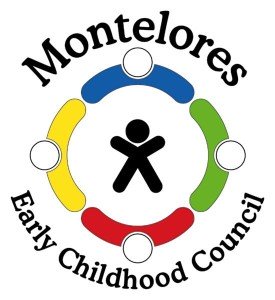Read a review of Diversity in Early Care and Education: Honoring Differences by Janet Gonzalez-Mena.
Janet Gonzalez-Mena’s book, Diversity in Early Care and Education: Honoring Differences, packs a big punch for such a slim book. I’ve read it three times and learned something new each time. I highly recommend it for anyone who works in education, social, and human services in our community.
Consider the subtitle: Honoring Diversity. In order to honor diversity we not only have to understand different perspective and beliefs, we must put aside ideas about right and wrong; we must make our unconscious belief systems conscious; we must suspend judgment; and we must believe in our heart that all cultures are equally relevant, valuable, and important. Achieving this is challenging, a lifelong process requiring frequent self-reflection, and a willingness to engage in and learn from relationships with parents, co-workers, and others. Janet’s humility and honesty in describing her personal processes is reassuring to those of us who also struggle to change. She says,“They say we teach what we need most to learn. I am a good example. I’m working on my dialoguing skills. The problem is that when I have a strong reaction to something that doesn’t fit my system, I usually consider it a problem…..My natural reaction is to become defensive and start arguing.”
CHAPTER SUMMARIES:
Each chapter begins with some focus questions designed to get us thinking, and each chapter also has Points to Ponder about the various themes in the chapter.
CHAPTER ONE: Perceiving and Responding to Differences
We all have a culture, even those of us who belong to the “dominant” culture, but because so much of culture is unconscious we think that our way of being is “normal.” In this chapter we have a chance to expand our definition of culture, and think about how our beliefs impact our work with children and families. The goal is to achieve synchrony between the policies and practices in early childhood settings and what families believe and do. “Babies are raised to be members of their cultures.” The author gives several examples of behaviors teachers do unconsciously that are considered culturally assaultive.
CHAPTER TWO: Communicating across Cultures
We have to understand the big picture, and we have to be able to interpret the meaning behind behavior in order to be skilled at cross-cultural communication. Honoring cultural differences does not mean giving up our own philosophy; instead it means that we learn about and respect each family’s wishes for their child. The author discusses 6 factors that are important in communicating cross-culturally: personal space; smiling; eye contact; touch; silence; and time concepts.
CHAPTER THREE: Working with Diversity Issues
This chapter gives three examples of cultural differences and common conflicts that happen in early care and education settings everywhere: respect for elders, the importance (or not) of self-esteem, and toilet training. These are typically areas in which everyone has strong beliefs and opinions. Janet discusses the pros and cons of 5 possible outcomes to these cultural conflicts, and highlights that the best outcome is mutual education. Fortunately she describes a process for working with diversity issues. She ends with 8 pointers for handling conflicts: be patient; understand yourself; be sensitive to one’s own discomfort; learn about other cultures; find out what parents want; take risks; communicate, dialogue, negotiate; share power.
CHAPTER FOUR: A Framework for Understanding Differences
Are you an individualist or a collectivist? Do you believe children should become independent or interdependent? Although the author warns not to stereotype ourselves or others, she uses these cultural tendencies to show how they influence caregiving routines such as eating and sleeping, and how babies come to our care having already absorbed their families’ tendencies. Janet suggests we ask, “What’s the harm?” in a parent’s preference for her child. For those family practices and preferences that can cause harm (putting baby to bed with a bottle, which can cause baby bottle tooth decay; sleep position; and dietary practices that lead to obesity) she suggests we present information in a nonjudgmental manner. About other practices, she reminds us to help parents articulate their goals for their kids in the hope that, if there is a discrepancy, eventually the parent will choose practices more in line with their goals.
CHAPTER FIVE: Attachment and Separation
Families that have a collectivistic cultural framework generally keep their babies embedded in all family activities; the babies are rarely alone because these families value closeness throughout the lifespan. They don’t believe in cutting the apron strings. On the other hand, families that have an individualistic cultural framework want their kids to be independent, to be happy spending time alone, and to have relationships outside the family; they cut the apron strings as early as seems appropriate. Can you imagine how babies from these very different frameworks will deal with being in an early education environment for the first time? The author discusses the implications for early childhood programs, as well as discussing the difference between a cultural framework and dysfunctional practices.
CHAPTER SIX: Differing Perspectives on Learning through Play
Some cultures value play; others do not. “The diversity regarding ideas about play is great!” states the author. This includes differences about the following cultural themes: people versus toys; the value of giving children choices; the role of adults in children’s play; the importance or not of verbal communication; the value of a child-centered environment versus an adult-centered environment. In some cultures play is not considered the main way to learn – instead, children should learn through observation of adult roles and practice performing these roles. You can imagine the cross-cultural skills needed to navigate these differences in a way that honors the family.
CHAPTER SEVEN: Socialization, Guidance, and Discipline
Should kids stand out or fit in? Should they be praised? What about ownership of toys and possessions? Expressions of feelings? Power and authority? Almost everyone has strong opinions about guidance and discipline, let alone considering different cultural frameworks and beliefs. This chapter has important messages for all of us in early childhood education!




Connect With Us!